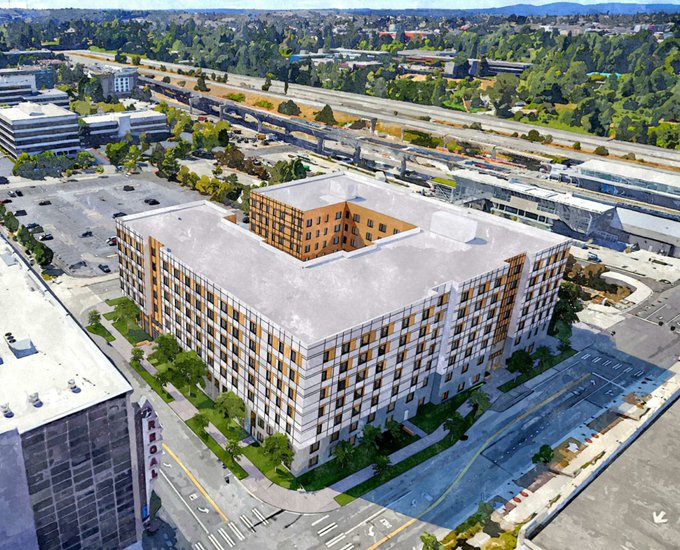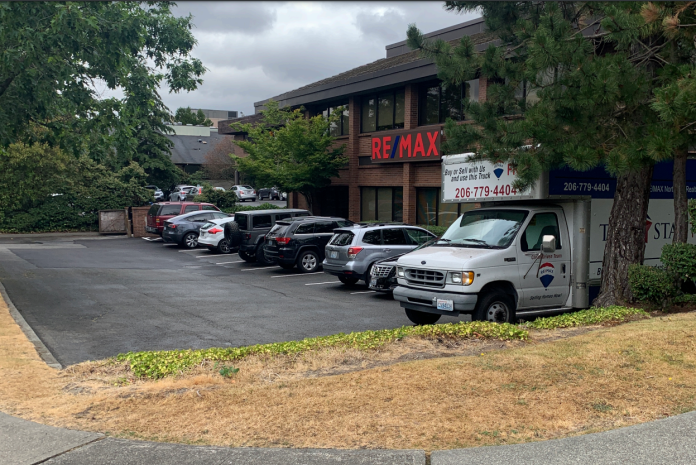
Twin eleven-story towers are in the works for Northgate Terrace, a strip-mall style office park a quarter mile southeast of Northgate Station anchored by Re/Max Realtors and AAA Insurance. The freshly laid site plans, however, are contingent on the Seattle City Council granting a contract rezone to provide a 145-foot height limit. This contract rezone process is often time consuming and could lead to headaches for the developer and delay the towers’ groundbreaking. If it doesn’t go smoothly, the contract rezone may even jeopardize the proposal from becoming Northgate’s first building to move beyond midrise and into highrise territory.
The site plan, prepared by Twist Design, proposes to split 308,000 square feet of gross building space between housing, offices, parking, and a small amount of retail. This plan estimates 158 homes averaging 785 square feet each, which suggests a good number of two-bedrooms are envisioned, and an estimated 163 underground parking stalls in a shared podium.
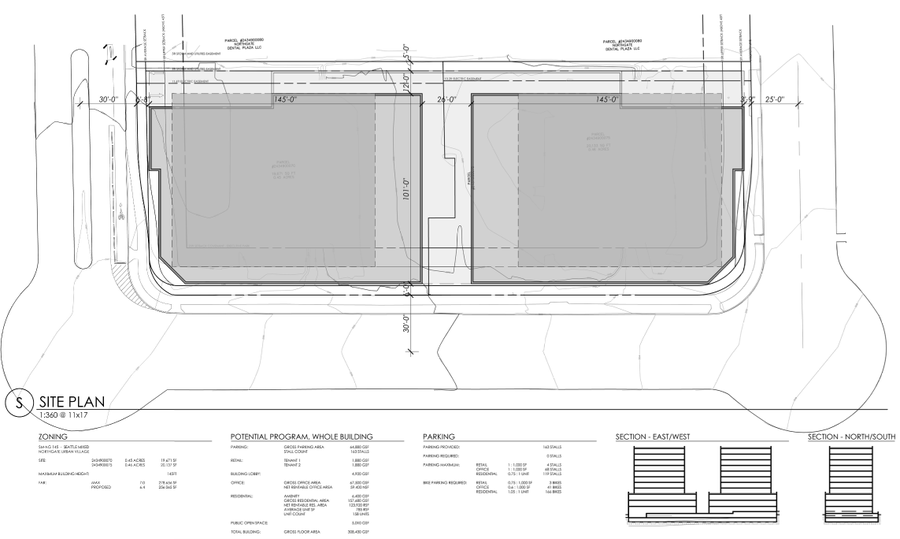
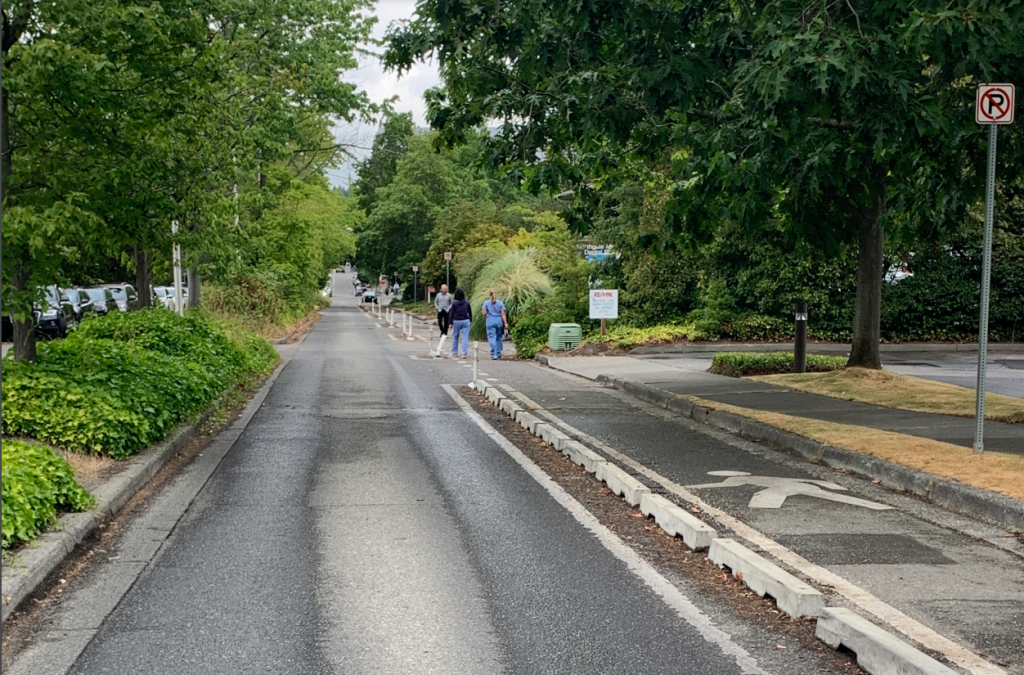
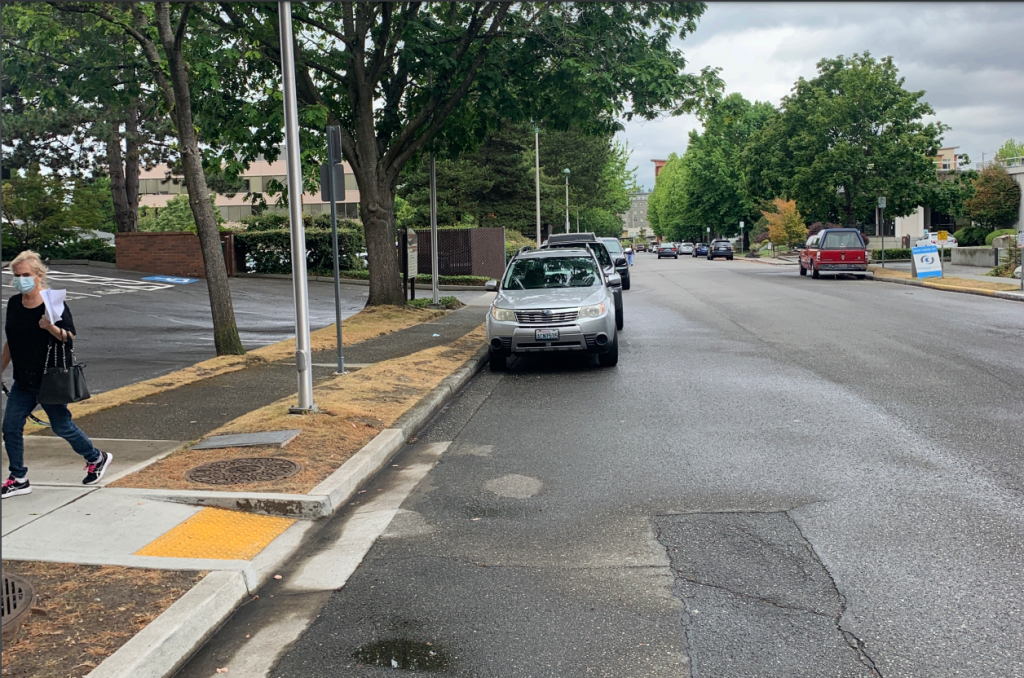
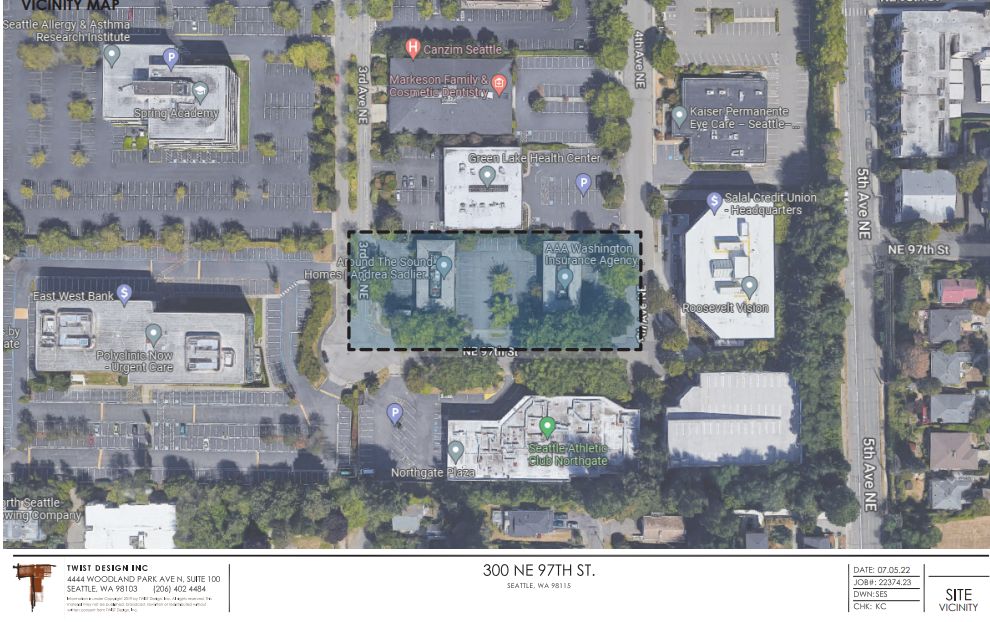
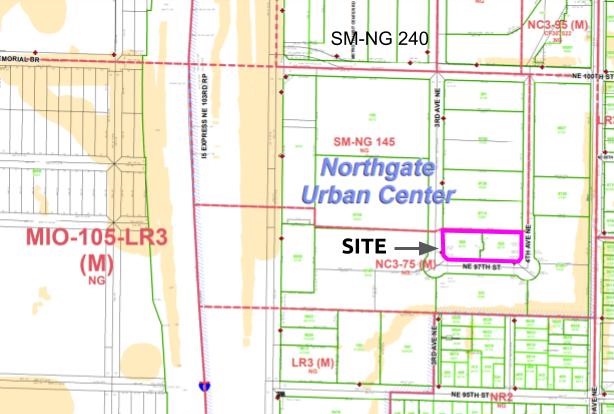
The Northgate Terrace site currently has NC3-75 zoning with a 75-foot height limit, but the developer is requesting SM-NG 145 zoning as the neighboring lot just to the north already has. That contract rezone would boost the affordability requirements as well.
While 11-story towers would reach new heights for Northgate, the 2019 Mandatory Housing Affordability (MHA) rezones of the neighborhood did grant 240-foot zoning allowing towers up to 24 stories tall immediately east of the station in a large County-owned lot. There was hope this would lead to a large mixed-income highrise development opening shortly after the station opened in 2021. That didn’t come to pass, however.
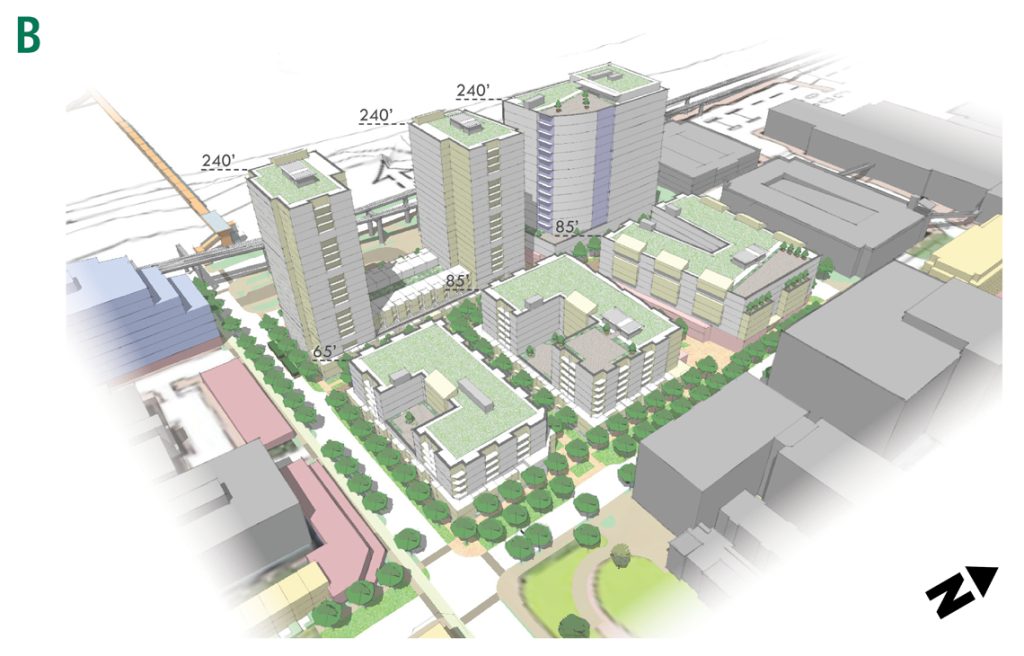
The Urbanist has covered the reasons why more housing hasn’t yet materialize on the publicly owned land right outside the light rail station. Problems first started brewing when King County Metro was not satisfied with the proposals it received in its initial Request for Proposals (RFP) back in 2018, leading them to initiate another RFP. Metro picked a developer, but eventually those talks broke down and plans were abandoned. The delay caused by the second RFP led Councilmember Debora Juarez (whose District 5 includes Northgate) to say: “I’m disappointed that Northgate may become the textbook example of how not to do transit-oriented development.”
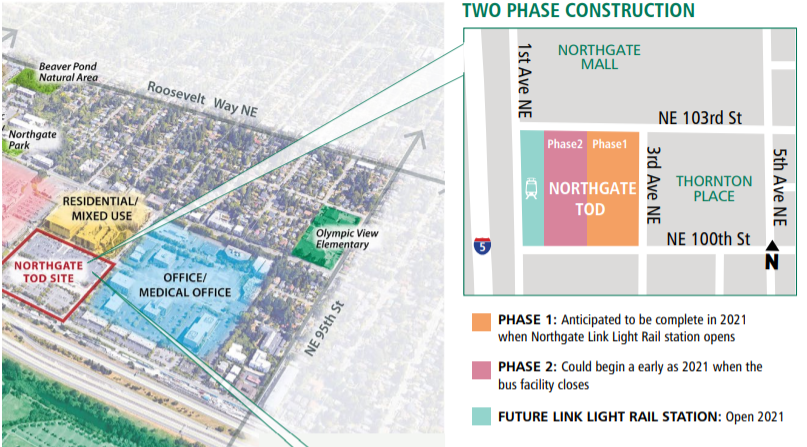
Salvaging the situation, Metro switched to an all-affordable proposal from Bridge Development that will add a 232-unit, seven-story building on the north corner of the site. This preserved a park-and-ride lot on the remainder of the site for a few years longer until the Lynnwood Link extension opens in 2024. At that point, highrises for the rest of the site might be back on the table, but there’s been no word so far — though King County Metro did pledge to begin planning the second phase at some point this year.
Needless to say it’s been a bit of a saga trying to bring about the transformation of Northgate from car-oriented mall to people-oriented urban neighborhood. We’re still waiting on the first highrise development near Northgate Station, although thousands of apartments are going up in midrise and lowrise zones farther east of the station, such as along 5th Avenue NE. In contrast, two light rail stops to the south, the University District has seen a bonanza of highrises proposed, permitted, and constructed. The zoning in the U District is more generous, the neighborhood is more walkable, rents are higher, and the close proximity to the University of Washington makes it very attractive to students and developers catering to them.
However, the dearth of highrise activity suggests the Northgate rezone could have been more generous and akin to the U District to generate a similar spurt of transit-oriented development (TOD). Due to how the MHA program is structured, the higher intensity upzones generate higher affordability requirements, which is generating huge contributions to the City’s affordable housing trust fund in the U District. Northgate’s contributions are considerably less, but an upzone could potentially ramp that up. Likewise, there are steps the city could take to boost the walkability and desirability of the neighborhood.
The City is adding a few bike lanes and neighborhood greenways in an attempt to shoehorn some relatively safe corridors into an otherwise hostile area for people walking, rolling, and biking. However, many blocks remain hostile or even impermeable, making the efforts feel like a few isolated pockets in an otherwise suburban and car-dominated space.
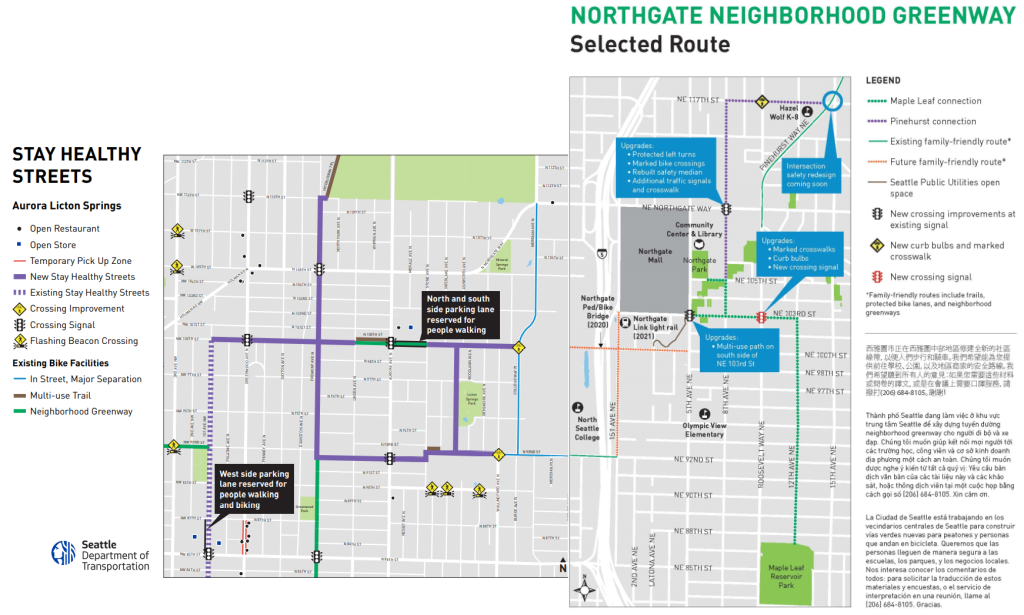
Beyond the County-owned lot, Simon Properties, the landlord of the Northgate Mall, owns much of the remaining land currently zoned for highrise development, up to a maximum height of 145 feet. To the south, zoning quickly tapers off to 75 feet and then lowrise and Neighborhood Residential (formerly known as single family zoning). There is a wide swath of 95-foot zoning to the north, before the tapering begins. To the east, midrise quickly gives way to single family zoning in the space of about six minutes walk.
The Northgate Mall is undergoing a major overhaul, but thus far Simon Properties is emphasizing office space and NHL Seattle’s Practice Complex over housing. Even farther north, the Seattle Housing Authority (SHA) purchased a 8.5-acre low-rise apartment complex it re-dubbed Northgate Commons in 2020 to prevent displacement of residents there and allow for further expansion of affordable housing stock down the road. The SHA site has a 95-foot height limit at present. Replicating the model it used with Yesler Terrace, SHA envisions partnering with private developers to redevelop its site in phases, ultimately producing 1400 units, with approximately two-thirds market-rate and one-third set aside as affordable, as Brian Miller of the Daily Journal of Commerce reported in 2021.
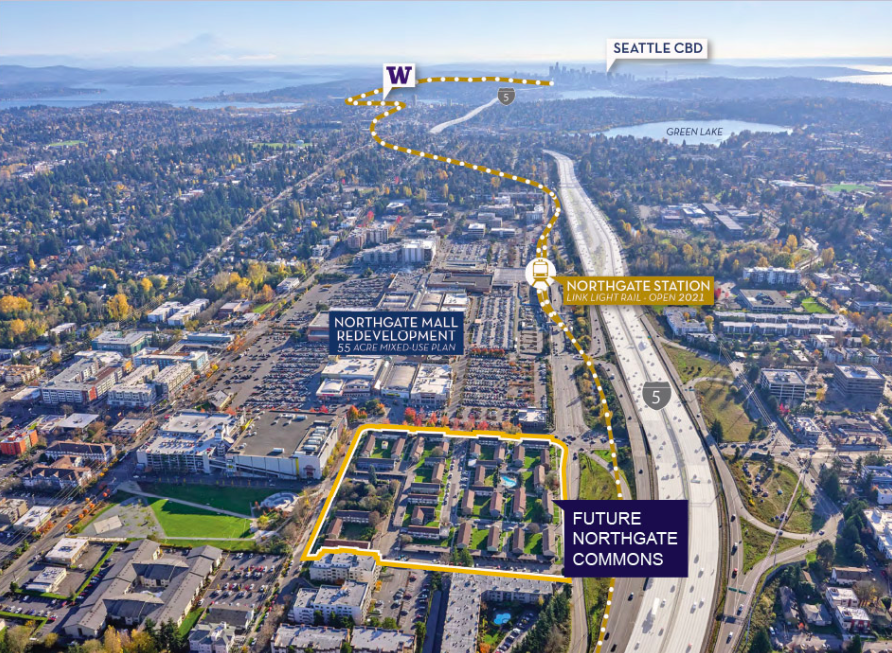
A highrise upzone could open up opportunities, from the Northgate Commons to the mall to the scattered office parks and low-slung retail strewn about seemingly in all directions. If SHA’s site included highrises instead of just midrises, SHA could produce significantly more homes. Meanwhile, 240-foot zoning, or even 320-foot zoning like the U District tops out at, could encourage Simon Properties to include more housing in the next phase of its mall redevelopment.
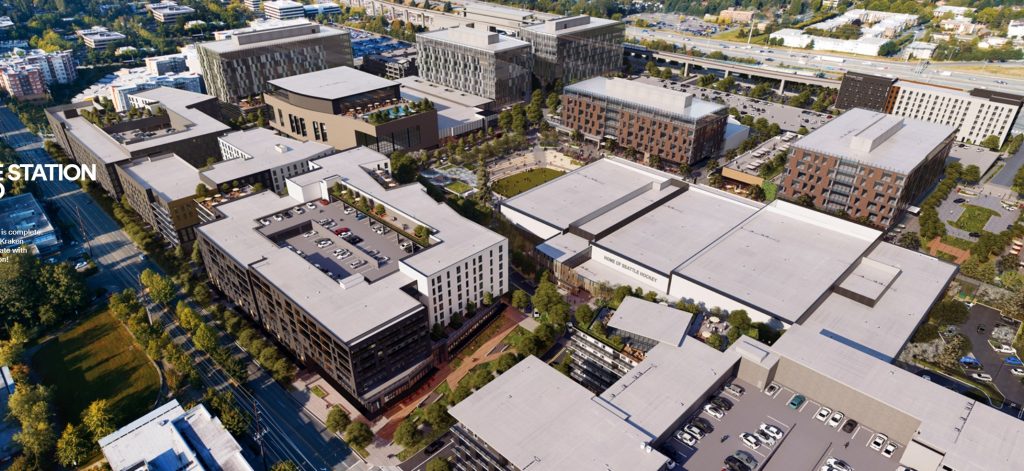
There’s no getting around the fact that Northgate is still not a very walkable and bike-friendly space, nor one that encourage people to linger rather than rush through. The plan to overhaul the neighborhood from an urban design perspective relies to a large extent on new development to bring about the changes block by block. It doesn’t feel like the neighborhood has reached that tipping point yet, but a further upzone could be the catalyst Northgate needs to get there.
The 2024 Comprehensive Plan Update presents a golden opportunity to adjust Northgate’s zoning, as well as grapple with apartment bans blanketing much of the city more broadly. The scoping period on the plan is open through August 22nd, which presents an opportunity for housing advocates to comment and express their priorities.
A contract rezone at Northgate Terrace would be a small step in that direction, but it certainly seems like the Seattle City Council should be thinking bigger and broader.
Doug Trumm is publisher of The Urbanist. An Urbanist writer since 2015, he dreams of pedestrian streets, bus lanes, and a mass-timber building spree to end our housing crisis. He graduated from the Evans School of Public Policy and Governance at the University of Washington in 2019. He lives in Seattle's Fremont neighborhood and loves to explore the city by foot and by bike.

